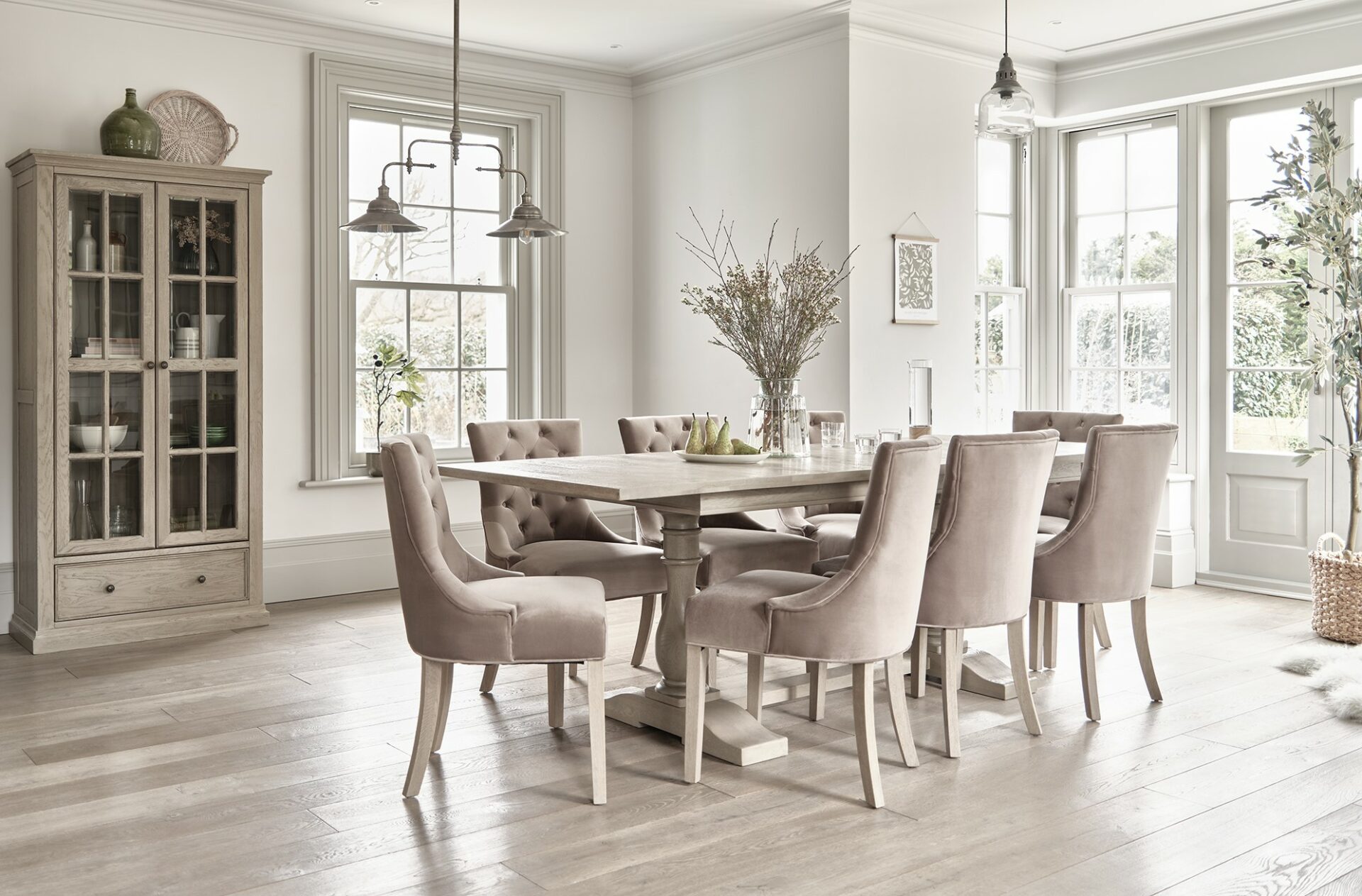Surrounded by family and friends enjoying a meal together is one of life’s most enjoyable experiences. While the formality of dining rooms has shifted over the years, sitting at a dining table, enjoying the company of those around you, remains a tradition that many of us still love. Whether it’s a simple meal with your other half and your children or inviting friends around for a relaxed dinner party.
The comfort level of your chairs is something you will want to consider when choosing which style to purchase. If you use your dining table for more than just quick meals – perhaps it serves as a makeshift office when you work from home or it’s the place the kids do their homework each evening – then you’ll want to ensure your chairs are comfortable to sit in for extended periods of time.
Should you choose benches or seats? Find out more.
You’ll also want to consider their durability. As we normally eat and drink whilst sat on our dining room chairs, they are more prone to stains and as part of daily family life, will need to be robust.
So what factors do you need to consider when choosing the right chair for your needs? Read on to find out what you need to know when choosing the right upholstery for your dining chairs.
What is upholstery?
To start off, what do we mean by an upholstered dining chair? Normally this refers to the materials that make up the soft coverings of a chair. Normally, this includes the fabric, padding, webbing and springs. While these internal materials are generally covered and unseen, they do make a big difference in whether your dining chair will provide the comfort and support you’re looking for.
While the outer visible fabric can be changed years down the line – whether that’s from years of wear and tear or if you simply fancy a change – the inner support layers will ensure your chair is built to last. With this in mind, you’ll want to look for high-quality materials when making your choice.
Choosing the right fabrics
It’s important to consider how much and who will be using your dining room chairs as these factors will play a big role in what fabrics will have staying power.
Many materials age over time and so you’ll want to consider not just how it looks when purchased new but how it will look years down the road after being used many many times over.
Leather is easy to look after but will develop a natural patina over time and while some may view this as a positive attribute to using a natural material, others may not appreciate that changing look over the years.
If your dining room has a sunny window, be aware that some fabrics may fade when exposed to sunlight.
For info on choosing the right fabric for your sofa, check out our post here.
Choosing the right colours
When considering what colours to choose for your dining chairs, most of us will simply want it to work well with the choice of colours already in use in the room. However, because dining chairs tend to be a bigger investment piece (especially as they are normally purchased in multiples), you may want to consider a more neutral shade to give you flexibility in the future should you decide to redecorate.
Keep in mind as well that darker colours and highly patterned materials will almost always hide stains better and so tend to look better long-term than lighter colours will do.
What’s the Martindale rub test and why should it matter?
In any case, most fabrics are graded using the Martindale rub test which is a unit for quantifying the abrasion resistance of textiles, especially when used in upholstery. The test stimulates natural wear of a seat cover, where the textile sample is rubbed against a standard abrasive surface with a specified force.
Commercial grade fabrics are usually rated at 100,000 to 250,000 double-rubs whilst residential use fabrics fall between 10,000 to 25,000 double-rubs. Essentially, the higher the Martindale unit of your fabric, the more wear and tear it will be able to withstand.
The best upholstery for homes with kids and pets
For a busy family life or homes with pets, you’ll want to pay greater attention to the fabric you use. While a velvet fabric or vintage silk chair seat may look stunning, constant use and an inability to wipe it clean may make it an impractical choice long-term.
Avoid delicate fabrics which can pull and mark more easily and look out for new materials on the market which are more robust and stain-resistant.
You might even want to consider slip-covered dining chairs which will allow you to easily launder any stains on a regular basis.
Leather may be another good choice here as it’s easy to wipe down with a baby wipe (which contains less harsh chemicals than other cleaning materials), giving your chairs a new lease of life without a large amount of effort.

